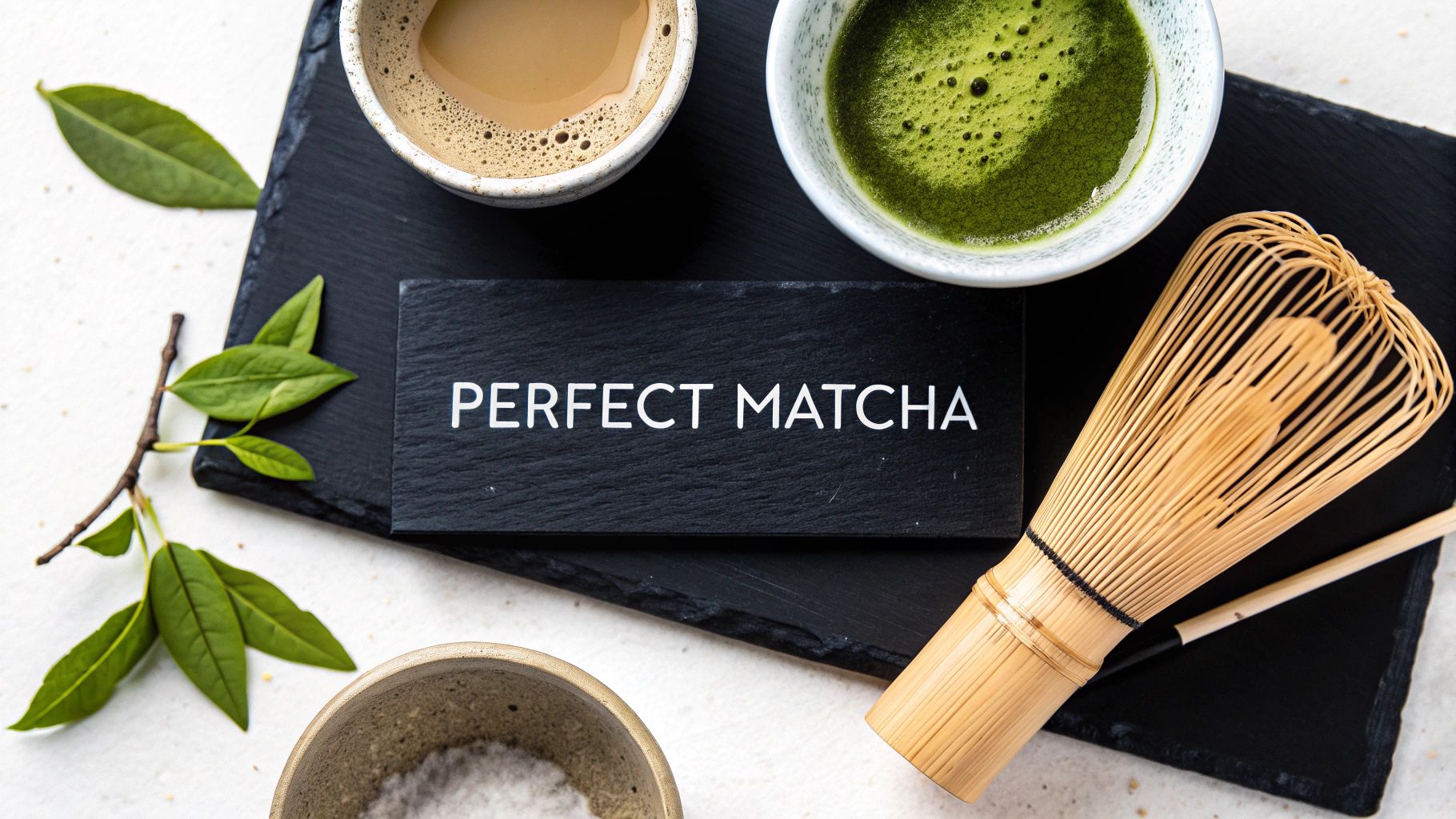Learning how to make matcha is a simple, satisfying ritual that transforms your daily routine. At its heart, it’s just three small steps: sifting the powder to remove lumps, whisking it with hot (but not boiling) water to form a smooth paste, and finally, adding more water or steamed milk.
This simple process transforms fine green tea powder into the vibrant, frothy drink we all know and love—one that’s both calming and energising. With the right technique and high-quality matcha, you can craft a café-perfect cup that supports your wellness goals right from your own kitchen.
Welcome to the Art of Matcha
Making matcha is more than following a recipe; it’s a moment of mindfulness that results in a beautiful, nourishing drink. This guide is here to take the mystery out of it, turning what might feel like a complicated café-only treat into a simple pleasure you can enjoy every day. We’ll cover everything from the basic techniques to fun, creative twists, so you can craft your perfect cup, every single time.
And remember, your matcha experience is personal. You can tailor it to fit your mood or goals with different blends. Whether you crave the classic, rich umami of Amatsu Matcha's Pure blend for a traditional taste or you’re looking to supercharge your routine, there's a perfect matcha for you.
Imagine infusing your day with functional blends like:
- Radiance: Enhanced with collagen to support glowing skin.
- Shrooms: Fortified with adaptogenic mushrooms for mental clarity.
- Strength: Boosted with creatine to power your physical performance.
A Growing UK Obsession
This ancient Japanese tea is taking the UK by storm, and for good reason. Its popularity isn't just a fleeting trend; it reflects a bigger shift towards wellness and mindful consumption. People are actively seeking alternatives to the jittery coffee buzz, and matcha offers a unique, gentle lift—a state of calm alertness. You can dive deeper into the health benefits of matcha and its functional ingredients in our detailed article.
The numbers back this up, too. The UK matcha tea market is experiencing serious growth, projected to climb from $137.25 million in 2025 to $517.96 million by 2035. This isn't just about tea; it shows how much we're embracing matcha as a versatile ingredient in everything from lattes and cakes to even cosmetics. You can read more in this UK matcha market analysis.
Think of this guide as your starting point for creating that flawless, frothy cup. It’s here to give you the confidence and know-how to make matcha a beloved part of your daily ritual, connecting you to a centuries-old tradition with a modern, functional twist powered by Amatsu.
Gathering Your Essential Matcha Tools

Before we get to the whisking, let’s talk about your toolkit. While you don’t need a full-blown ceremonial setup to enjoy a fantastic bowl of matcha at home, a few key pieces of equipment can make all the difference. Think of it less as a strict requirement and more as setting yourself up for success.
The right gear is designed specifically for matcha, helping you achieve that beautiful, creamy texture and unlock its full, complex flavour. Honestly, it just makes the whole process smoother and far more enjoyable, ensuring you get the most out of your premium matcha powder.
The Traditional Trio: Why They Work
At the heart of any authentic matcha ritual, you’ll find three core items. These tools have been perfected over centuries for a very good reason—they get the job done right, every single time.
- Chawan (Matcha Bowl): This isn't just any old cereal bowl. A proper chawan is wide and relatively flat-bottomed, which is crucial. It gives you the space to whisk properly without splashing and allows the whisk to reach every bit of powder for a smooth blend.
- Chasen (Bamboo Whisk): If you invest in only one thing, make it this. The chasen is the real star of the show. Its 100+ delicate bamboo tines are designed to aerate the tea, whipping it into the signature frothy, velvety foam that a metal whisk or a fork simply can't replicate. Pro tip: always soak your chasen in warm water for a minute before use. This softens the bamboo, making it flexible and less prone to breaking.
- Chashaku (Bamboo Scoop): This simple, elegant scoop helps you measure the perfect amount of powder. Its shape is ideal for gently lifting the matcha from the tin to your bowl. Typically, one to two scoops is all you need for a perfect cup.
Our advice? Investing in a quality starter set is the single best thing you can do to elevate your matcha game. It’s not about being a purist; it's about respecting the craft and getting a far better-tasting result from your high-quality Amatsu Matcha.
Don't Have the Gear? Modern Stand-Ins
If you're just starting your matcha journey and aren't ready to commit to the full kit, don’t let that stop you. You can absolutely get by with a few clever substitutes you probably already have in your kitchen.
To help you decide what you need, here’s a quick comparison of the traditional tools versus some common household alternatives.
Essential Matcha Tools vs Household Alternatives
| Traditional Tool | Purpose | Modern Alternative | Result Comparison |
|---|---|---|---|
| Chawan (Bowl) | Wide base for effective whisking | A small soup or cereal bowl | Can be tricky to whisk without splashing; harder to break up clumps at the edges. |
| Chasen (Whisk) | Aerates tea into a fine, consistent foam | Electric milk frother or a small metal whisk | A milk frother works surprisingly well for foam but won't break up clumps as effectively. A metal whisk creates bubbles, not microfoam. |
| Chashaku (Scoop) | Measures 1-2g of powder precisely | A 1/2 teaspoon measuring spoon | Perfectly functional for measuring, just lacks the traditional feel. |
The most popular and effective substitute is a handheld electric milk frother. It does a great job of mixing the matcha and creating froth, though it won't produce the same velvety microfoam as a chasen. In a pinch, you can even shake matcha and water in a tightly sealed jar for a quick fix, but you'll miss out on the incredible texture.
As you make matcha part of your daily routine, you’ll quickly see why the traditional tools are so highly regarded, especially when you’re working with what might be the best matcha in the UK. The right equipment truly helps the quality of your Amatsu Matcha shine through.
Mastering the Ceremonial Matcha Method
Alright, you’ve gathered your tools, so let's get down to it. This is where the magic happens—transforming that vibrant green powder into a smooth, frothy bowl of wellness. Don't think of this as just a recipe; it's a mindful practice. The small, deliberate steps are precisely what make the final cup so rewarding.
For a traditional preparation, you’ll want to use a high-quality ceremonial grade matcha. Both Amatsu Matcha 'Pure' and 'Radiance' are perfect for this, as their delicate, umami-rich flavours are designed to be enjoyed simply with hot water.
The Sifting Ritual
Let's start with the single most important, non-negotiable step for a perfect cup: sifting. Matcha powder is incredibly fine, which means it loves to clump together thanks to static and humidity. Trust us, skipping this is the quickest route to a lumpy, disappointing brew.
Using a fine-mesh sieve, gently press one to two scoops of your Amatsu Matcha through the mesh directly into your chawan. This simple act aerates the powder and helps it dissolve completely, giving you that silky-smooth consistency we're all after. It only takes a few extra seconds, but the payoff is huge.
Getting the Water Temperature Just Right
The next critical detail is your water temperature. So many people make the mistake of using boiling water, which will ruin your matcha before you even start. Water that's too hot (anything over 80°C) will scorch the delicate tea leaves, destroying their complex flavours and releasing tannins, resulting in a harsh, bitter taste.
The sweet spot is between 70-80°C (160-175°F).
This temperature is hot enough to dissolve the powder but gentle enough to protect its nuanced, savoury umami notes—the signature of a high-quality matcha. If you don't have a variable-temperature kettle, no problem. Just boil the water and let it sit for a few minutes to cool down before you pour.
This visual guide breaks down the core process into its essential movements.
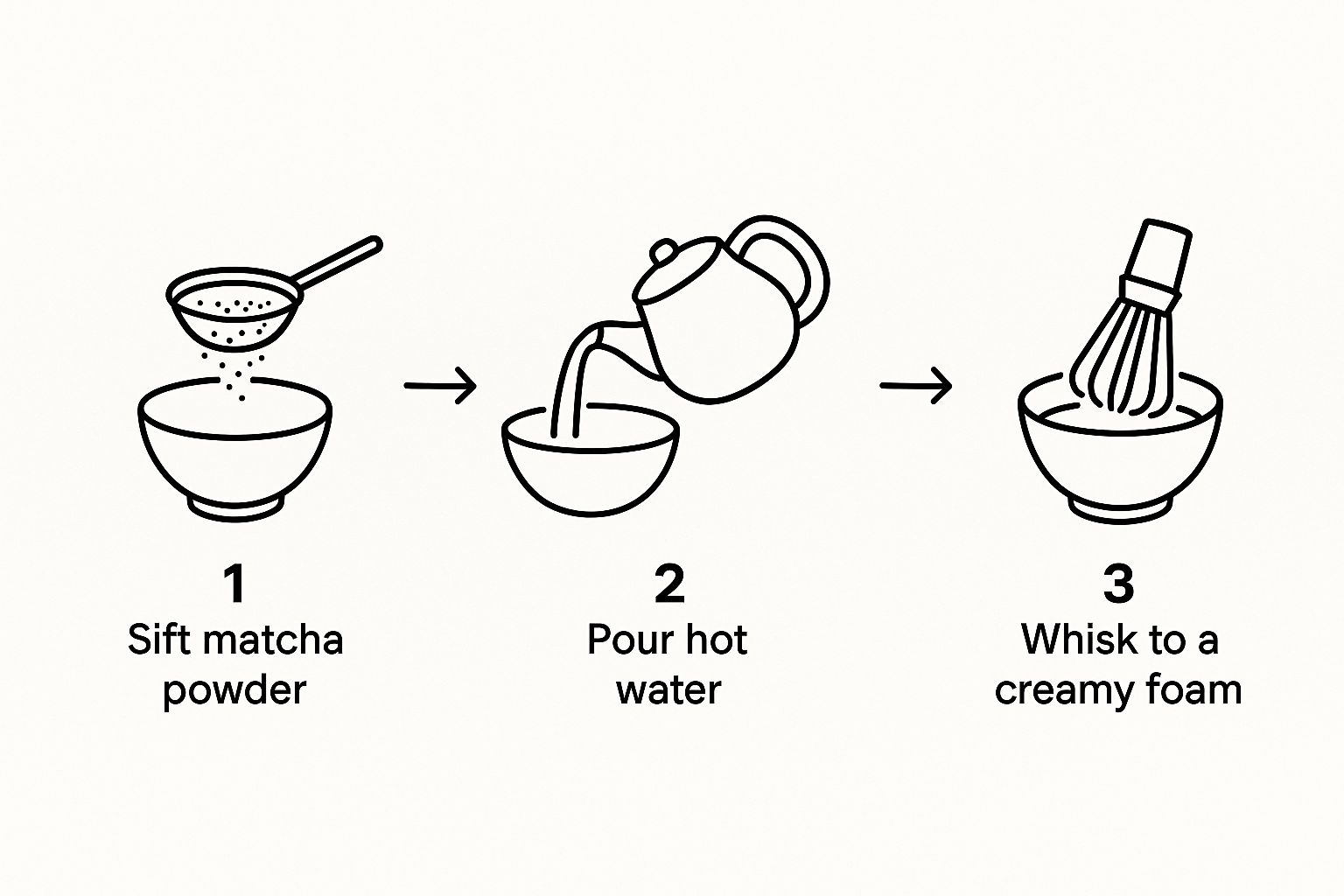
The flow from sifting to whisking is straightforward, yet each stage builds upon the last to create that beautifully prepared bowl.
Mastering the Whisking Motion
Now for the heart of the ceremony. Pour a small amount of your hot water (about 60ml or 2oz) over the sifted matcha. Grab your soaked chasen (bamboo whisk) and get ready to whisk—but not in circles.
The correct technique is a rapid "W" or zigzag motion.
- Hold the chawan firmly with one hand.
- Grip the chasen lightly, keeping your wrist relaxed and loose.
- Whisk vigorously back and forth in that W-shape for about 20-30 seconds.
- Focus on quick movements from your wrist, not your whole arm.
This rapid motion is what whips air into the tea, building that rich, stable layer of creamy microfoam on top. You'll know you're done when the tea is a uniform, vibrant green, and the surface is covered in tiny, dense bubbles.
The rise of matcha isn't just a UK phenomenon; it's a global shift towards mindful wellness. The global matcha market, currently valued at $3.84 billion, is projected to hit $6.48 billion by 2029. This incredible growth highlights a worldwide consumer interest in products that offer both health benefits and a unique experience. As UK consumers increasingly seek out health-conscious options, this trend is set to continue. You can dig into more data on this topic in this comprehensive market report.
Once you've built up a lovely foam, you can top up your bowl with the remaining hot water if you like. Give it one last, gentle stir, and your perfect bowl of Amatsu Matcha is ready to be savoured.
Troubleshooting Common Matcha Mistakes

Don't be discouraged if your first few bowls of matcha aren't quite perfect. Learning to prepare matcha is a skill, and like any craft, it takes a bit of practice. The good news is that most beginners run into the same few hiccups, and they’re all surprisingly easy to fix.
The most common issues usually boil down to three things: a bitter taste, stubborn clumps, or a disappointing lack of foam. Once you know what to look for, you can tweak your technique and start enjoying a consistently beautiful bowl of Amatsu Matcha every time.
Why Does My Matcha Taste Bitter?
This is easily the number one complaint from newcomers, and it almost always points to one of two things: your water is too hot, or your matcha is low quality.
When you pour boiling (100°C) water over the delicate tea leaves, you're essentially scorching them. This destroys the complex umami flavour and releases bitter-tasting tannins.
- The Fix: Always aim for a water temperature between 70–80°C. This simple act of patience makes a world of difference. Additionally, ensure you're using ceremonial-grade matcha, like Amatsu's Pure or Radiance blends. Lower-quality powders are naturally more bitter and are better suited for cooking.
It’s also worth noting that some people might mistake matcha’s naturally rich, slightly vegetal taste for bitterness. High-quality matcha should have a pleasant depth, not an aggressive sharpness. To dive deeper, check out our guide comparing pure matcha vs. green tea for daily wellness.
How Do I Get Rid of Clumps?
There's nothing more disappointing than taking a sip of what should be smooth, velvety matcha, only to find gritty, undissolved clumps. Because matcha powder is so incredibly fine, it's prone to clumping. Once those clumps are in the water, no amount of whisking will break them up.
The secret to a silky-smooth texture happens before you add water. Always sift your matcha powder through a fine-mesh strainer. This simple step aerates the powder and breaks up any lumps, guaranteeing it will dissolve completely for a flawless finish.
Why Won't My Matcha Froth?
That signature creamy layer of foam, known as usucha, is what many of us are chasing. If you're struggling to create it, a few things could be at play.
- Your Whisking Motion: Are you stirring in circles? That won't create froth. You need a rapid back-and-forth zigzag or 'W' motion to whip air into the tea and build microfoam.
- The Water-to-Matcha Ratio: Too much water makes it nearly impossible to build a stable foam. Start with less water (about 60ml) to create a thick base. Whisk it into a froth first, then add more hot water if you prefer a thinner drink.
- Speed and Energy: Don't be timid! You need a light, energetic wrist action for about 20-30 seconds to generate the necessary air. It’s all in the wrist.
Beyond The Bowl: Crafting Modern Matcha Drinks
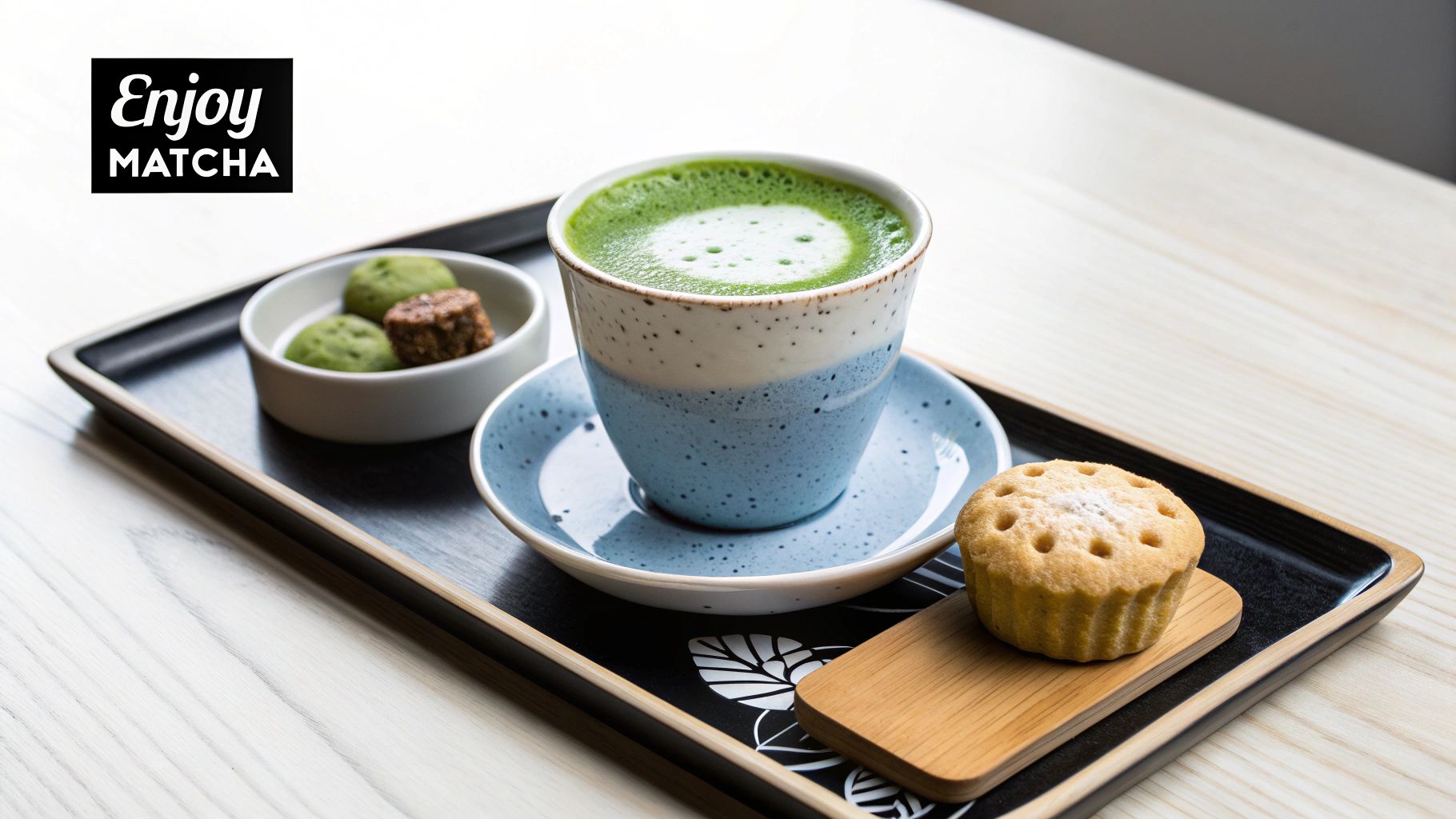
Once you’ve got the hang of making a traditional bowl of matcha, a whole world of creativity opens up. This is where the real fun begins, weaving matcha’s vibrant flavour and powerful benefits into your daily life. From creamy lattes to functional smoothies that supercharge your day, matcha is incredibly versatile.
It's your chance to play with flavours, textures, and new ingredients, unlocking the full potential of your Amatsu Matcha.
How to Make a Flawless Matcha Latte
The matcha latte is a modern classic for a reason, but making one at home is far easier (and cheaper) than you might think. The secret is to start with a strong, well-prepared matcha base—using the same technique you learned for the traditional bowl.
For a Hot Matcha Latte:
- Make Your Matcha Shot: Sift 1-2 tsp of matcha into your mug. Our Amatsu Pure blend is perfect for a classic, smooth latte. Add about 60ml (2oz) of hot, but not boiling, water (ideally 70-80°C). Whisk in a zig-zag pattern until it's completely smooth with a nice layer of froth.
- Heat and Froth Your Milk: While your matcha shot rests, heat and froth around 180ml (6oz) of your favourite milk. Oat milk gives an unbeatable creamy texture, but almond and dairy milk also work beautifully.
- Combine and Sip: Gently pour the steamed milk into your matcha. Hold back the thickest foam with a spoon, pour in the liquid milk, and then spoon the foam on top for a café-style finish. Add a drizzle of honey or maple syrup if you like it sweet.
Want it iced? Easy. Make your matcha shot, fill a glass with ice, pour in your cold milk, and then gently pour the matcha on top for those beautiful, Instagram-worthy layers.
A lot of people find their way to matcha lattes as a gentler alternative to their daily coffee. If you're on the fence, we've broken down the key differences between matcha and coffee for clean energy and focus.
Functional Matcha Recipes for a Modern Lifestyle
This is where matcha truly shines as more than just a tea. It's a functional powerhouse, and our specialised Amatsu blends are designed to help you tap into that potential and upgrade your favourite recipes.
Here are a couple of ideas to get you started:
- Pre-Workout Power Smoothie: In a blender, combine a frozen banana, a scoop of vanilla protein powder, a handful of spinach, your milk of choice, and 1 tsp of Amatsu Strength. The added creatine provides a clean, powerful boost for your workout, without the crash.
- Afternoon Focus Booster: Feeling that 3 p.m. slump? Gently heat some oat milk and whisk in 1 tsp of Amatsu Shrooms with a dash of cinnamon. The adaptogenic mushrooms are brilliant for cutting through brain fog and restoring clarity.
- Beauty-Boosting Latte: Give your regular latte a glow-up by using Amatsu Radiance. The added collagen works from within to support healthy skin, hair, and nails.
Think of Amatsu Matcha as a versatile wellness ingredient that fits seamlessly into a healthy, modern routine.
Choosing Your Amatsu Blend
Not sure which blend to use for your creations? It comes down to your goals, both in flavour and function. Our blends are specifically formulated with added functional ingredients to support different aspects of your well-being.
Amatsu Matcha Blends and Their Ideal Uses
| Amatsu Blend | Key Ingredients | Flavour Profile | Best For |
|---|---|---|---|
| Pure | 100% Ceremonial Grade Matcha | Smooth, umami, no bitterness | Traditional prep, lattes, baking |
| Shrooms | Matcha, Lion’s Mane, Reishi | Earthy, rich, subtly sweet | Focus, clarity, stress relief |
| Radiance | Matcha, Collagen | Smooth, bright green tea | Skin health, beauty-from-within routines |
| Strength | Matcha, Creatine | Clean, vibrant green tea | Pre-workout energy, physical performance |
Ultimately, the best blend is the one that fits your taste and your lifestyle. Don't be afraid to experiment to find your perfect matcha moment.
Your Matcha Questions Answered
Even with the best guidance, stepping into the world of matcha can bring up a few questions. From the nitty-gritty of caffeine to practical tips on keeping your powder fresh, we’ve gathered the most common queries to help you perfect your practice and feel confident in your new ritual.
How Much Caffeine Is in Matcha?
A typical one-gram serving of matcha contains roughly 35–70mg of caffeine. While that’s more than standard green tea, it’s usually less than an average coffee.
But the numbers don't tell the whole story. The magic of matcha is how your body absorbs the caffeine. Thanks to a high concentration of an amino acid called L-theanine, the energy release is slow and steady. This creates a state of calm alertness—all the focus without the jitters or the dreaded afternoon crash that coffee drinkers know so well. It’s a big reason why Londoners are ditching coffee for matcha.
Ceremonial vs Culinary Grade Matcha
Knowing the difference between matcha grades is key to getting the flavour you want. They aren't just marketing terms; they serve completely different purposes.
- Ceremonial Grade: This is the best of the best, made from the youngest, most delicate tea leaves. It has a beautifully smooth, rich umami flavour with virtually no bitterness. It’s meant to be savoured with just hot water, which is why our Amatsu Matcha Pure and Radiance blends are ceremonial grade.
- Culinary Grade: Made from more mature leaves, this grade has a bolder, slightly more astringent taste. Its robust flavour is designed to hold its own against other ingredients, making it perfect for lattes, smoothies, and baking.
How Should I Store Matcha to Keep It Fresh?
Think of your matcha like a delicate spice. Its three worst enemies are light, air, and heat, all of which can quickly degrade its vibrant colour and complex flavour.
To keep it at its best, always store your matcha in an airtight, opaque container—the tins your Amatsu Matcha arrives in are perfect for this. Pop it in a cool, dark place like a pantry or cupboard. The fridge is also a great spot for long-term storage, but make sure the tin is sealed tightly to keep out moisture and odours. Once opened, aim to use your matcha within a few months to enjoy it at its peak.
Key Takeaway: Treat high-quality matcha like a fresh ingredient. Storing it properly protects its nutrients and flavour, ensuring every cup you make is as good as the first.
Can I Make Matcha Without a Bamboo Whisk?
The traditional bamboo whisk, or Chasen, is the gold standard for achieving that signature velvety froth. But if you don't have one, you’re not out of luck.
An electric milk frother is a fantastic substitute and does a great job of breaking up the powder and creating a decent foam. In a real pinch, you could even shake the matcha and water together vigorously in a tightly sealed jar. That said, for the smoothest, most authentic, lump-free texture that lets the quality of your Amatsu Matcha shine, the Chasen is truly in a league of its own.
Ready to create your own mindful matcha ritual? Explore the Amatsu Matcha collection and discover the perfect blend to support your daily wellness. Whether you crave the classic taste of Pure or a functional boost from Radiance, Shrooms, or Strength, we have a matcha for you.
Shop the full Amatsu Matcha range now and elevate your daily cup.
Article created using Outrank
Read more
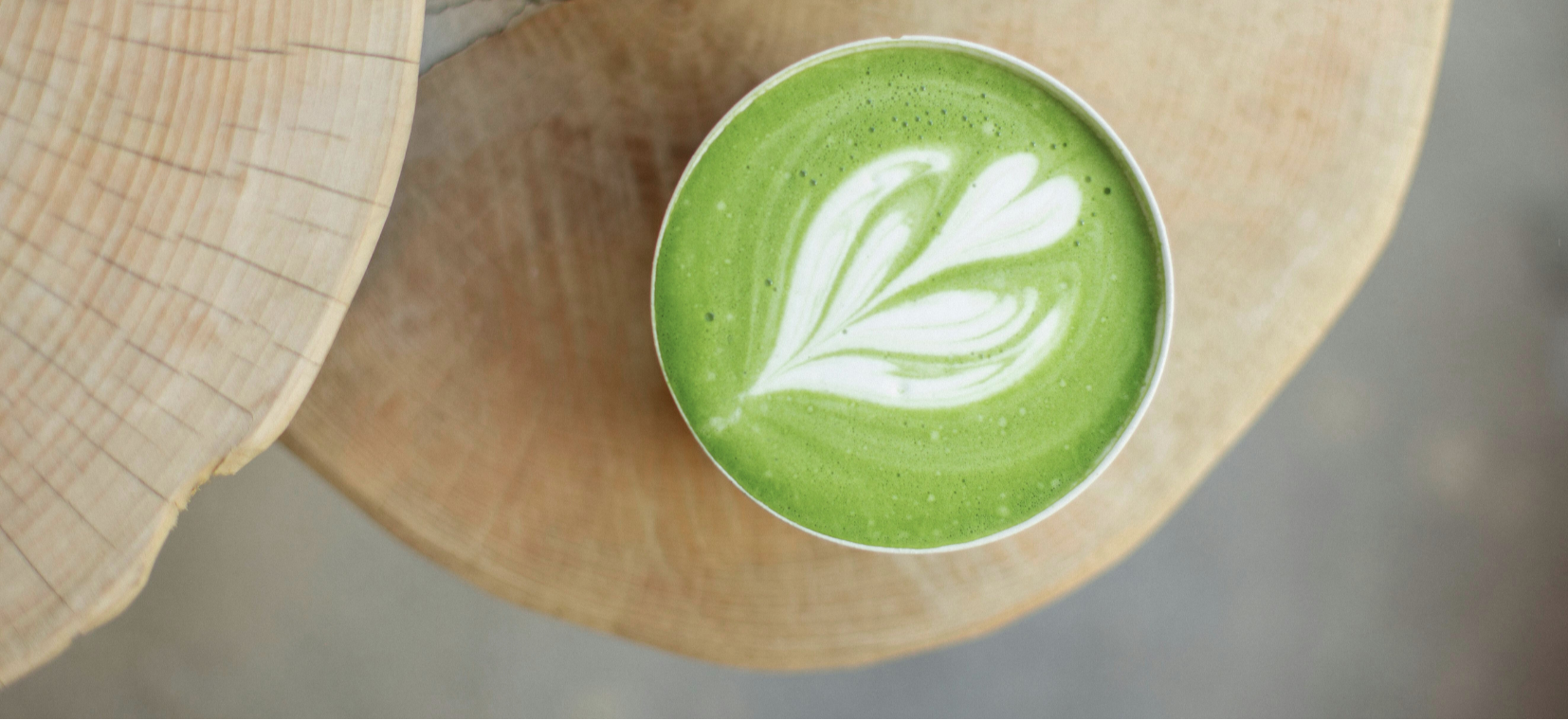
Matcha vs coffee: who wins? Compare energy, focus, anxiety, and health benefits. Discover why more people in the UK are switching to matcha.
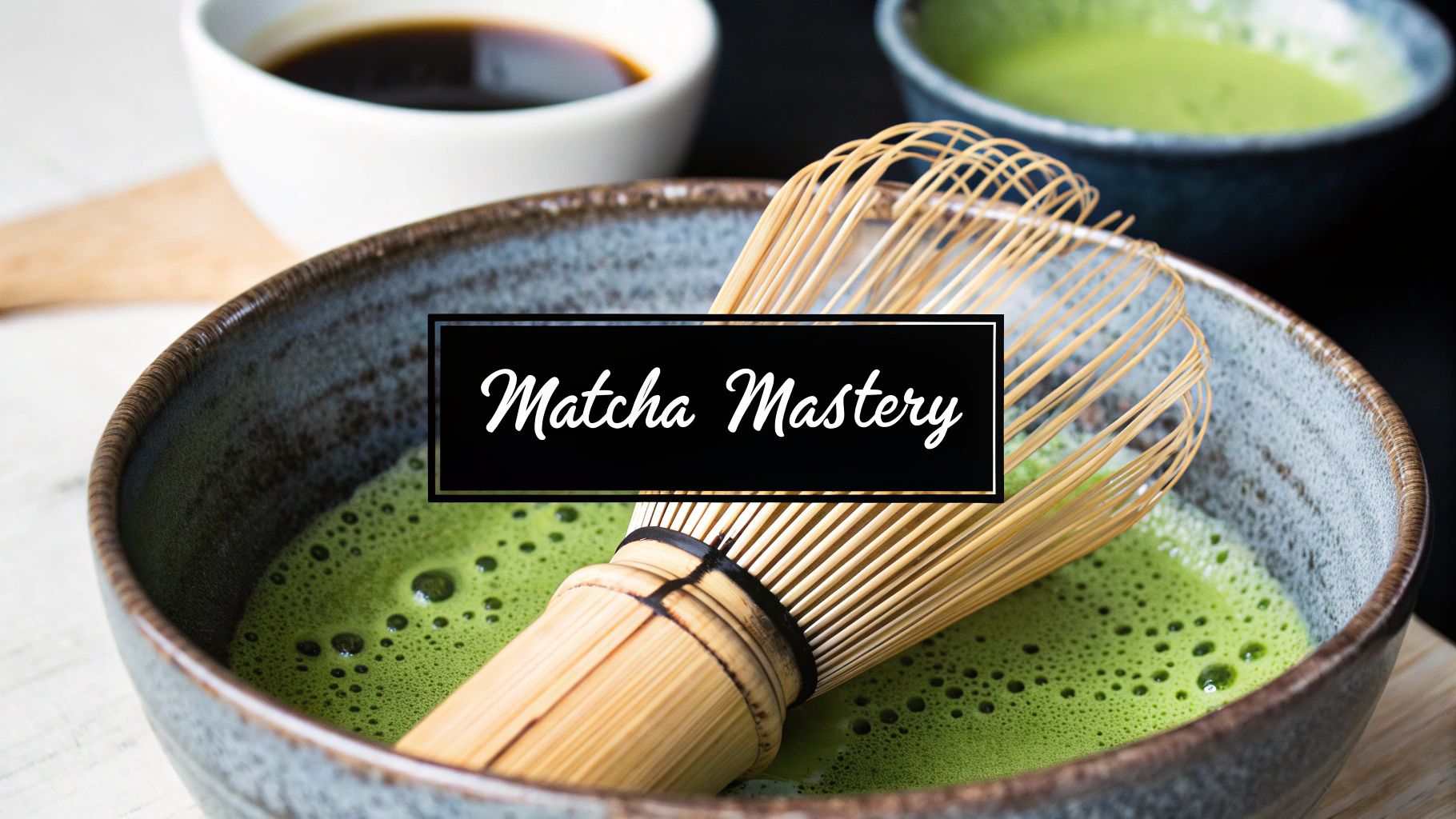
Learn how to use matcha powder to make perfect drinks and more. Our guide offers practical tips for lattes, traditional tea, and creative recipes.
